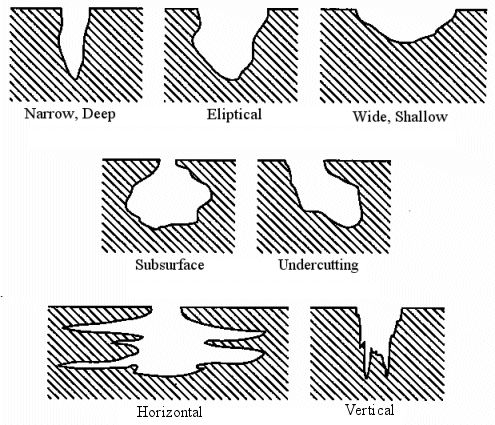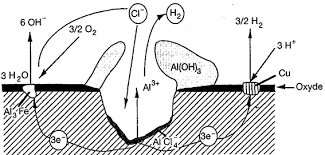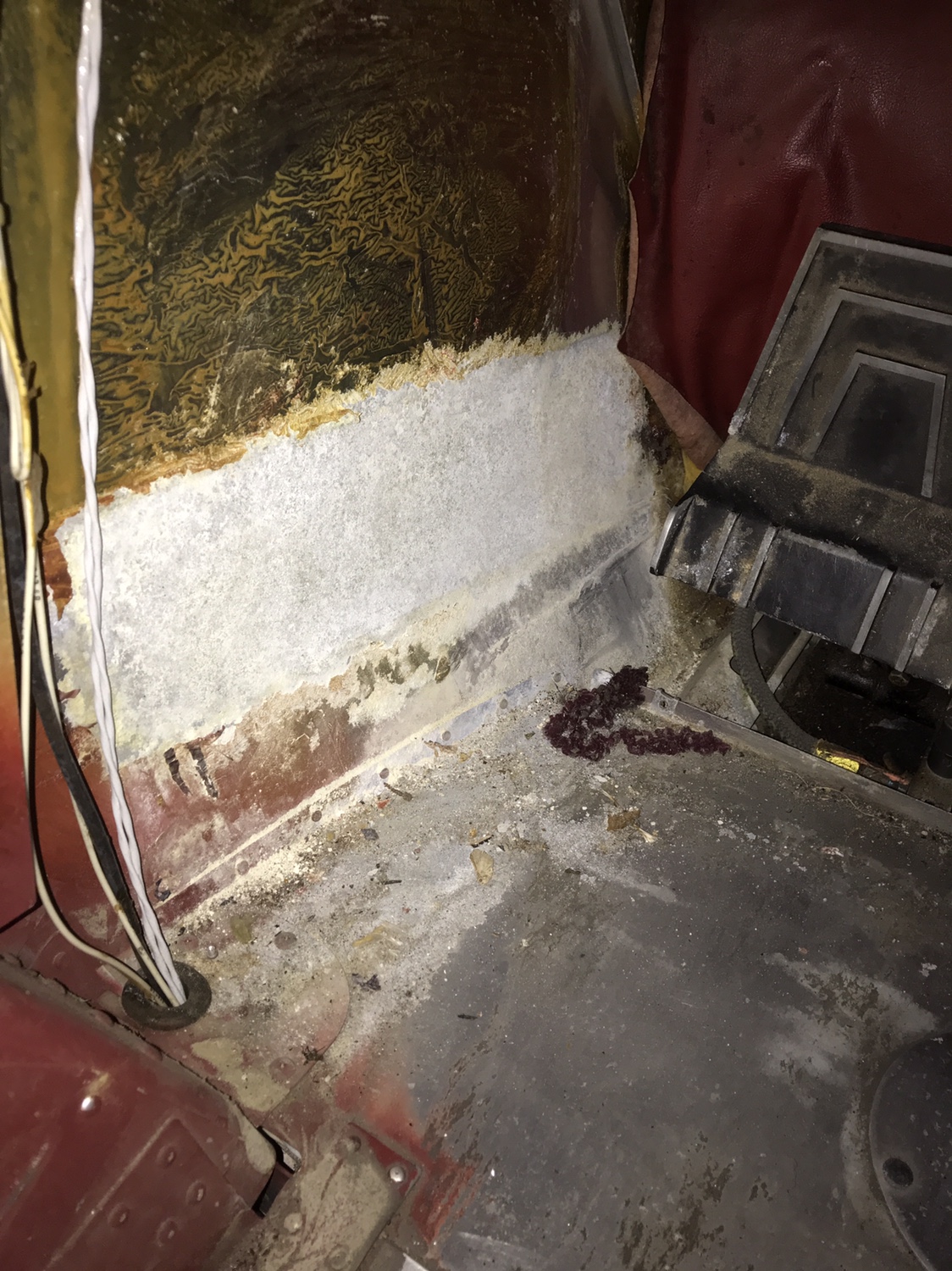You are using an out of date browser. It may not display this or other websites correctly.
You should upgrade or use an alternative browser.
You should upgrade or use an alternative browser.
Corrosion.
- Thread starter Tom-D
- Start date
Checkout_my_Six
Touchdown! Greaser!
so...what.
texasclouds
En-Route
So is that enough to make it unairworthy until repaired? What is the repair procedure?
Tom-D
Taxi to Parking
- Joined
- Feb 23, 2005
- Messages
- 34,740
- Display Name
Display name:
Tom-D
It is structure, you allow it to progress, it can become unairworthy.So is that enough to make it unairworthy until repaired? What is the repair procedure?
the track got replaced, the floor was cleaned treated and primed.
FYI. replacing the forward floor in a Cessna 182 is a huge job. involving the door post structure, and the gear box structure. (major repair)
Checkout_my_Six
Touchdown! Greaser!
so....maybe they were fixing other corrosion? No biggie Tom. See this all the time.....
Tom-D
Taxi to Parking
- Joined
- Feb 23, 2005
- Messages
- 34,740
- Display Name
Display name:
Tom-D
yep.. the Cessna's have a problem in this area. almost every seat track I pull has some corrosion.so....maybe they were fixing other corrosion? No biggie Tom. See this all the time.....
Clip4
Final Approach
yep.. the Cessna's have a problem in this area. almost every seat track I pull has some corrosion.
I have pulled these several times in a 182, never had corrosion under them. Makes me wonder if a water trapped between the rail and a wet floor is the causation.
EppyGA
Touchdown! Greaser!
Moral of the story, don't live on the coast 
Moral of the story, don't live on the coast
Even dry country planes seem to have trouble under the seat rails.
Dan Thomas
Touchdown! Greaser!
- Joined
- Jun 16, 2008
- Messages
- 10,781
- Display Name
Display name:
Dan Thomas
The worst corrosion I found was in a 210. Someone had spilled Coke (pop) in it and didn't clean it up.
People track water and mud into airplanes, too.
Cessna considers those rails to be part of the airplane's structure. They carry tensile loads in the belly and act as stiffeners.
People track water and mud into airplanes, too.
Cessna considers those rails to be part of the airplane's structure. They carry tensile loads in the belly and act as stiffeners.
wilkersk
Pattern Altitude
Tom, do you fay-seal new new seat rails? This seems like a common problem.
Tom-D
Taxi to Parking
- Joined
- Feb 23, 2005
- Messages
- 34,740
- Display Name
Display name:
Tom-D
what years were he 182s.I have pulled these several times in a 182, never had corrosion under them. Makes me wonder if a water trapped between the rail and a wet floor is the causation.
Clip4
Final Approach
what years were he 182s.
1979
Tom-D
Taxi to Parking
- Joined
- Feb 23, 2005
- Messages
- 34,740
- Display Name
Display name:
Tom-D
undoubtedly better cared for than many.1979
Tom-D
Taxi to Parking
- Joined
- Feb 23, 2005
- Messages
- 34,740
- Display Name
Display name:
Tom-D
I do not.Tom, do you fay-seal new new seat rails? This seems like a common problem.
Tom-D
Taxi to Parking
- Joined
- Feb 23, 2005
- Messages
- 34,740
- Display Name
Display name:
Tom-D
Time for a major repair ?
Clip4
Final Approach
Now that one is common.
Tom-D
Taxi to Parking
- Joined
- Feb 23, 2005
- Messages
- 34,740
- Display Name
Display name:
Tom-D
It's common where ever they used that glue.Now that one is common.
170s have a problem the same cause on the rear cabin former where Cessna glued the head liner
I've seen a couple with the corrosion where you showed it. referred both to repair facilities.
DutchRoller
Ejection Handle Pulled
- Joined
- Mar 18, 2017
- Messages
- 395
- Display Name
Display name:
DutchRoller
so...what.
Don’t you know?
Everyday mundane stuff is newsworthy in this day and age. Get with the program.
Clip4
Final Approach
It's common where ever they used that glue.
170s have a problem the same cause on the rear cabin former where Cessna glued the head liner
I've seen a couple with the corrosion where you showed it. referred both to repair facilities.
I meant the location. If I am interpreting the photo correctly it is showing the skin foward of the door where the heat discharge is located. For some reason that seems to be an area that is favorable to corrosion due to condensation.
bluerooster
Pattern Altitude
- Joined
- Nov 28, 2011
- Messages
- 2,074
- Display Name
Display name:
shorty
PaulS
Touchdown! Greaser!
Those didn't look bad to me, certainly worth cleaning up since you were checking but hardly serious.
Dan Thomas
Touchdown! Greaser!
- Joined
- Jun 16, 2008
- Messages
- 10,781
- Display Name
Display name:
Dan Thomas
That's about the worst I've seen. Exfoliation. What did the underlying structure look like?That ain't nuttin', here's what I found in my Cherokee:
Dan Thomas
Touchdown! Greaser!
- Joined
- Jun 16, 2008
- Messages
- 10,781
- Display Name
Display name:
Dan Thomas
You'd be surprised how little it takes to compromise the strength.Those didn't look bad to me, certainly worth cleaning up since you were checking but hardly serious.
Lndwarrior
Cleared for Takeoff
- Joined
- Jan 15, 2009
- Messages
- 1,134
- Display Name
Display name:
Gary
Don’t you know?
Everyday mundane stuff is newsworthy in this day and age. Get with the program.
Some of us who are less knowledgeable than some of you actually find this interesting. I will never understand why some feel the need to throw darts at those who actually teach some of us.
It's like some people are so unhappy with their lives that they have to lash out at others for absolutely no reason other than to sound superior.
When it's done for such a "mundane" topic it just comes across as churlish.
Why not just move onto the next post if you have no interest rather, than bringing such negativity?
Dan Thomas
Touchdown! Greaser!
- Joined
- Jun 16, 2008
- Messages
- 10,781
- Display Name
Display name:
Dan Thomas
Exactly. It's mundane to a lot of owners until the corrosion is found in their airplanes. Then it's not mundane anymore. It's expensive. Topics like this should help educate potential buyers of what to watch out for when looking at ancient airplanes, and most of the fleet is getting pretty ancient. And too many think that because aluminum doesn't rust it should last forever. They've never been mechanics dealing with this stuff. Aluminum, especially copper-alloyed aluminum like the 2024 commonly used in light airplanes and the 7000 series zinc-alloyed stuff used more in heavy aircraft, can corrode at an amazing rate under the right conditions. Adding copper or zinc makes the aluminum much stronger, but like everything in aviation there are compromises, and corrodability is the tradeoff here.Some of us who are less knowledgeable than some of you actually find this interesting. I will never understand why some feel the need to throw darts at those who actually teach some of us.
It's like some people are so unhappy with their lives that they have to lash out at others for absolutely no reason other than to sound superior.
When it's done for such a "mundane" topic it just comes across as churlish.
Why not just move onto the next post if you have no interest rather, than bringing such negativity?
PaulS
Touchdown! Greaser!
You'd be surprised how little it takes to compromise the strength.
I don't see it there Dan, I just see surface stuff, like someone spilled their coke or fruit juice. No penetration. I do agree that once you start seeing holes or even craters you should become concerned as these can act as stress concentrators.
Tom-D
Taxi to Parking
- Joined
- Feb 23, 2005
- Messages
- 34,740
- Display Name
Display name:
Tom-D
Exactly,, this area is covered in an AD in Cessna singles. This is why it almost mandatory to do the AD check on any aircraft prior to buying.Exactly. It's mundane to a lot of owners until the corrosion is found in their airplanes. Then it's not mundane anymore. It's expensive. Topics like this should help educate potential buyers of what to watch out for when looking at ancient airplanes, and most of the fleet is getting pretty ancient. And too many think that because aluminum doesn't rust it should last forever. They've never been mechanics dealing with this stuff. Aluminum, especially copper-alloyed aluminum like the 2024 commonly used in light airplanes and the 7000 series zinc-alloyed stuff used more in heavy aircraft, can corrode at an amazing rate under the right conditions. Adding copper or zinc makes the aluminum much stronger, but like everything in aviation there are compromises, and corrodability is the tradeoff here.
I don't see it there Dan, I just see surface stuff, like someone spilled their coke or fruit juice. No penetration. I do agree that once you start seeing holes or even craters you should become concerned as these can act as stress concentrators.
You may want to look again. Those Cherokee rails that were posted are the worst I’ve ever seen. That is far beyond surface corrosion, they’re dust.
Even the ones posted by Tom that are the subject of this thread are beyond just surface corrosion and Tom was doing the right thing by treating it.
PaulS
Touchdown! Greaser!
You may want to look again. Those Cherokee rails that were posted are the worst I’ve ever seen. That is far beyond surface corrosion, they’re dust.
Even the ones posted by Tom that are the subject of this thread are beyond just surface corrosion and Tom was doing the right thing by treating it.
I was responding to the original post.
Dan Thomas
Touchdown! Greaser!
- Joined
- Jun 16, 2008
- Messages
- 10,781
- Display Name
Display name:
Dan Thomas
The floor skin is thin. Corrosion creates millions of tiny pits that act as stress concentrators. It's not just a nice smooth, level reduction in thickness. And those pits harbor further moisture that accelerates the electrolytic processes involved in corrosion.I was responding to the original post.
Castings like the massive spar carrythroughs found in the Cessna 177 and 210 are subject to corrosion caused by water getting into the roof or condensing in the ceiling as a result of the breathing of the occupants. Cessna gets pretty excited about that corrosion, since it has been found to create voids within the casting that have only a tiny entrance.

Dan Thomas
Touchdown! Greaser!
- Joined
- Jun 16, 2008
- Messages
- 10,781
- Display Name
Display name:
Dan Thomas
See this: https://www.google.com/url?sa=t&rct=j&q=&esrc=s&source=web&cd=2&ved=2ahUKEwi3qde-yqDgAhVL2IMKHflxB7gQFjABegQICRAC&url=https://www.faa.gov/documentLibrary/media/Advisory_Circular/AC_43-4a_.pdf&usg=AOvVaw1ajbHGE1lop_Qch4uBVqhO
Scroll down for pictures.
Even better: https://www.google.com/url?sa=t&rct...itiative.pdf&usg=AOvVaw0zWgTsAGdmB2KmdE1w33-6
Scroll down for pictures.
Even better: https://www.google.com/url?sa=t&rct...itiative.pdf&usg=AOvVaw0zWgTsAGdmB2KmdE1w33-6
bluerooster
Pattern Altitude
- Joined
- Nov 28, 2011
- Messages
- 2,074
- Display Name
Display name:
shorty
Cleaned right up, and looked good. A nice surprize.That's about the worst I've seen. Exfoliation. What did the underlying structure look like?
PaulS
Touchdown! Greaser!
The floor skin is thin. Corrosion creates millions of tiny pits that act as stress concentrators. It's not just a nice smooth, level reduction in thickness. And those pits harbor further moisture that accelerates the electrolytic processes involved in corrosion.
Castings like the massive spar carrythroughs found in the Cessna 177 and 210 are subject to corrosion caused by water getting into the roof or condensing in the ceiling as a result of the breathing of the occupants. Cessna gets pretty excited about that corrosion, since it has been found to create voids within the casting that have only a tiny entrance.


Fortunately I didn't see any of those issues in the original post, in fact it looked as good as new after he cleaned it up. We are talking floor skin and seat rail here with superficial oxidation, not carry through spars with corrosion you depict above.
Dan Thomas
Touchdown! Greaser!
- Joined
- Jun 16, 2008
- Messages
- 10,781
- Display Name
Display name:
Dan Thomas
We're talking about structural parts, and that floor skin is a structural part. It carries flight loads like almost every other skin in the airplane and is part of the landing gear box's rigidity. The pitting and surface corrosion, if not cleaned up and treated, would continue at an accelerated rate until some other mechanic discovered that the whole floor needed tearing out and replacing. Or something cracked due to flight and landing loads on a badly weakened part.Fortunately I didn't see any of those issues in the original post, in fact it looked as good as new after he cleaned it up. We are talking floor skin and seat rail here with superficial oxidation, not carry through spars with corrosion you depict above.
I know you don't like to believe some of the stuff posted here by experienced people. What is your experience in aircraft maintenance?
Tom-D
Taxi to Parking
- Joined
- Feb 23, 2005
- Messages
- 34,740
- Display Name
Display name:
Tom-D
Not true..Landing gear boxes are the skin forward of the floor skin.and is part of the landing gear box's rigidity.
The floor skin is how ever structure, because it is a part of the fuselage forward box assembly.
each seat rail is attached to a stringer that connects the floor skin to the lower fuselage outer skin, making it a box assembly all the way back to aft of the baggage compartment
Last edited:











